Honda CR-V: EGR Passage Removal and Installation
Removal
1. Drain the engine coolant.
2. Remove the air cleaner housing.
3. Remove the harness holder (A) from the bracket,
then remove the harness holder bracket (B).
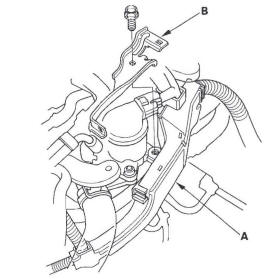
4. Remove the upper radiator hose (A), heater hose
(B), and water bypass hose (C).
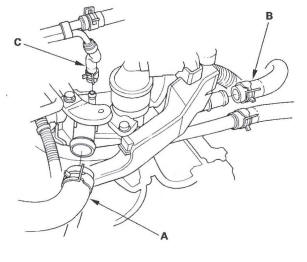
5. Remove the air cleaner housing brackets.
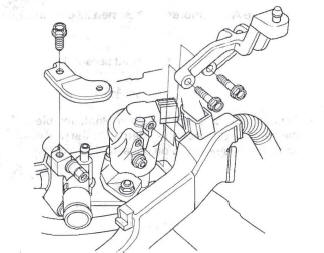
6. Disconnect the exhaust gas recirculation (EGR)
valve connector.
7. Remove the EGR passage.
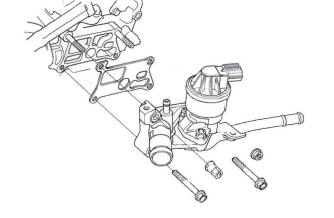
8. Remove the EGR valve.
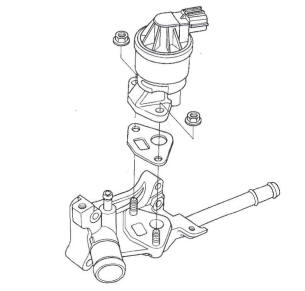
Installation
1. Install the EGR valve (A) with a new gasket (B).
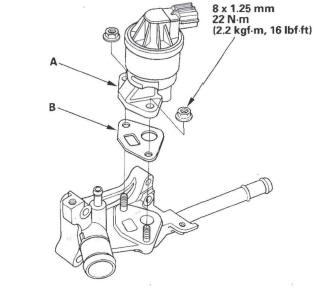
2. Install the EGR passage (A) with a new gasket (B).
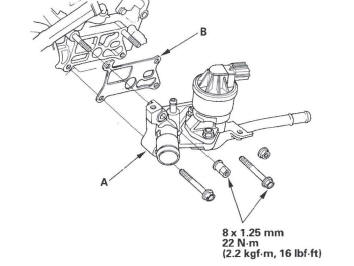
3. Connect the EGR valve connector.
4. Install the air cleaner housing brackets.
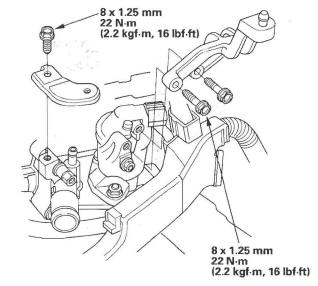
5. Install the upper radiator hose (A), heater hose (B),
and water bypass hose (C).
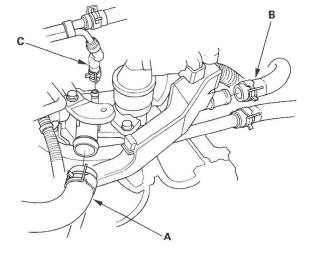
6. Install the harness holder bracket (A), then install
the harness holder (B).
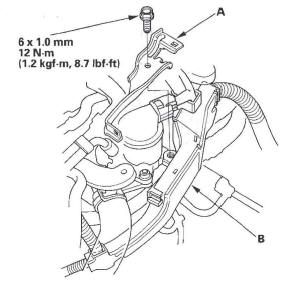
7. Install the air cleaner housing.
8. Refill the radiator with engine coolant, and bleed
the air from the cooling system with the heater
valve open (see step 6).
READ NEXT:
Removal
1. Remove the hood support rod, then use it as shown
to prop the hood in the wide-open position.
2. Remove the bulkhead cover.
3. Disconnect the fan motor connectors (A) and hood
switch conn
For Japan-produced Model
1. Drain the engine coolant.
2. Remove the hood support rod, then use it as shown
to prop the hood in the wide-open position.
3. Remove the bulkhead cover.
4. Remove the co
Component Location Index
RADIATOR FAN RELAY
A/C CONDENSER FAN RELAY
FAN CONTROL RELAY
A/C CONDENSER FAN ASSEMBLY
RADIATOR FAN ASSEMBLY
ENGINE COOLANT TEMPERATURE
(ECT) SENSOR 1
E
SEE MORE:
DTC P0716: Problem in Input Shaft
(Mainshaft) Speed Sensor Circuit
DTC P0717: Problem in Input Shaft
(Mainshaft) Speed Sensor Circuit (No Signal
Input)
NOTE:
Before you troubleshoot, record all freeze data and any on-board
snapshot, and review General Troubleshooting Information.
This code is c
DTC P2270: Secondary HO2S (Sensor 2)
Circuit Signal Stuck Lean
DTC P2271: Secondary HO2S (Sensor 2)
Circuit Signal Stuck Rich
NOTE: Before you troubleshoot, record all freeze data and any on-board
snapshot, and review the general troubleshooting information.
1. Turn the ignition switch ON (II).
2
© 2016-2026 Copyright www.hcrv.net












